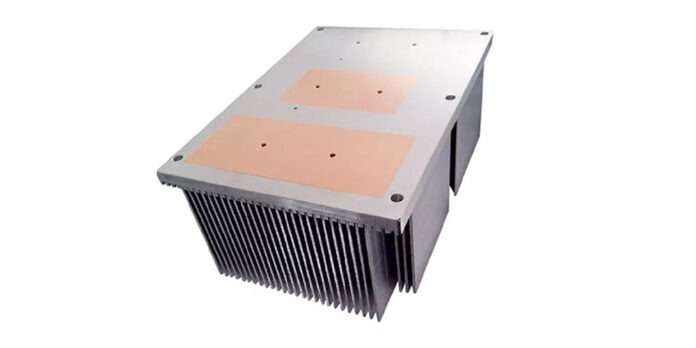Digital components generate heat because they depend on the flow of electrons via conduction to operate. Electron mobility results in resistance, which in turn causes heat to be produced. A device will generate more heat as more current it receives. This is the reason why electronic devices get too hot. So heat sinks are used to cool them down.
The bonded fin heat sink is advantageous in electronic equipment because they help in cooling the heat produced by the circuit boards. An electronic component’s heat is absorbed and dissipated away from it by a cooling unit called a heat sink. They mostly have a greater surface area to distribute heat and a metal plate or finned structure in contact with the electrical component.
What are Heat Sinks Used For?
To avoid overheating, which can damage electrical units and reduce the lifetime of the device, heat sinks are compulsory in electronic equipment. Heat sinks help maintain electronic equipment operating at maximum output and protect against overheating-related damages by dispersing heat away from the electronic component.
Things To Consider In Heat Sink Design
The design of a heat sink requires careful consideration of some factors to achieve the best cooling performance and efficient operation of the electronic device. It is very important to take an overview of the exact requirement before designing a bonded fin heat sink.
The key considerations in the designing of bonded fin heat sink are:
Thermal Resistance
The heat sink must be constructed according to the thermal specifications of the electronic component it is supposed to cool. The amount of heat produced by the component, the necessary heat resistance, and the preferred operating temperature are all included in this.
Material Selection
It is important to select a good material for a heat sink. To the highest possible level, the material used in a heat sink should be able to transmit heat away from the electronic component it is designed to cool. Thermal conductivity, specific heat capacity, weight, and cost are some significant factors to keep in mind while choosing materials for a heat sink.
Environmental Considerations
The heat sink design must be durable enough to stand up to the harsh environmental factors that will be present while the electronic equipment is operated, such as high temperatures, humidity, and vibration. Moreover, it could be essential to factor in corrosion, chemical exposure, and other environmental considerations into the heat sink’s design.
Cost Considerations
When designing the heat sink, the cost of the heat sink should be taken into account. The price of the heat sink can vary depending on the material used, the manufacturing process, and the level of design complexity. The performance requirements and financial restrictions should be balanced in the heat sink design.
Interface Materials
The thermal performance of the heat sink can be significantly impacted by the choice of interface materials, such as thermal interface materials (TIMs). The selection of TIMs can depend on aspects such as the level of thermal conductivity required, the simplicity of application, and the long-term reliability of the material.
Future Upgrades And Maintenance
Future upgrades or maintenance requirements should also be considered when creating the heat sink. The heat sink and any other required components should be easily replaceable according to the design, which shouldn’t necessitate extensive disassembly of the electrical equipment.
Testing And Validation
To verify that a heat sink design meets the thermal needs and design specifications, it should be tested and validated after completion. Measurements of temperature and airflow as well as assessments of thermal performance under various operating situations can all be part of testing.
Conclusion
Several technical and useful considerations must be made while developing a bonded fin heat sink. Most electronic circuits and power electronic devices require heat sinks as essential components. To construct a heat sink that effectively cools electronic devices, a variety of technical, financial, and environmental factors should be properly balanced.






